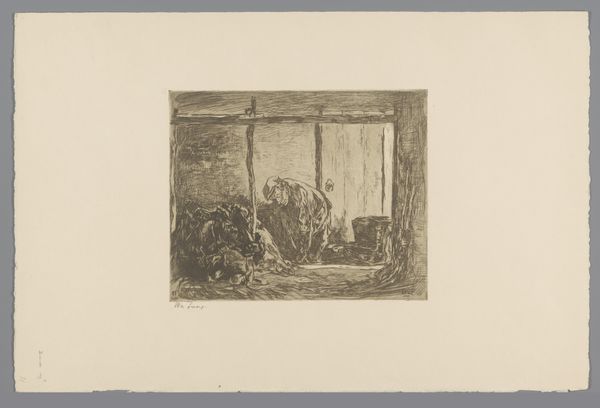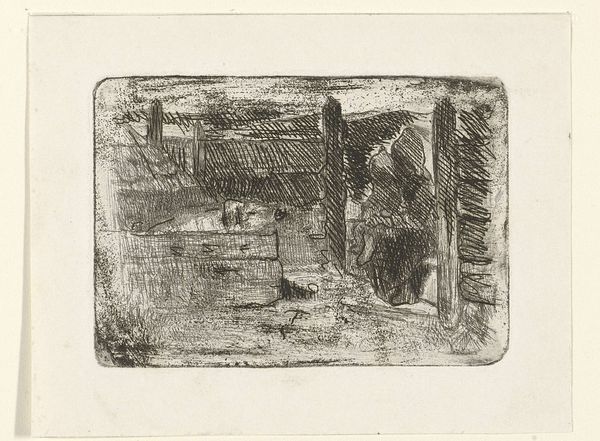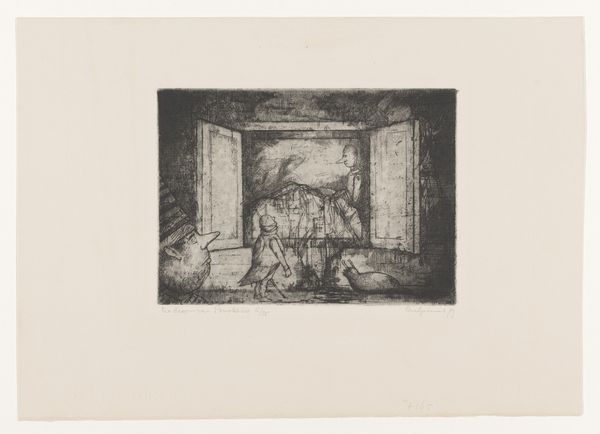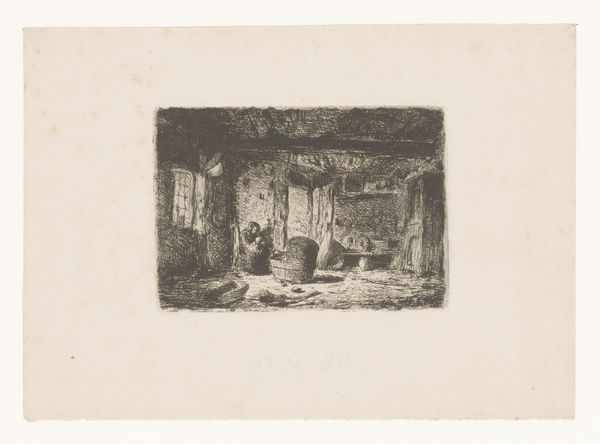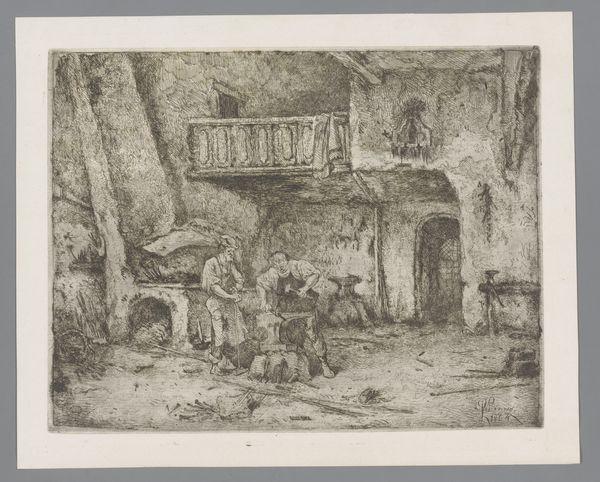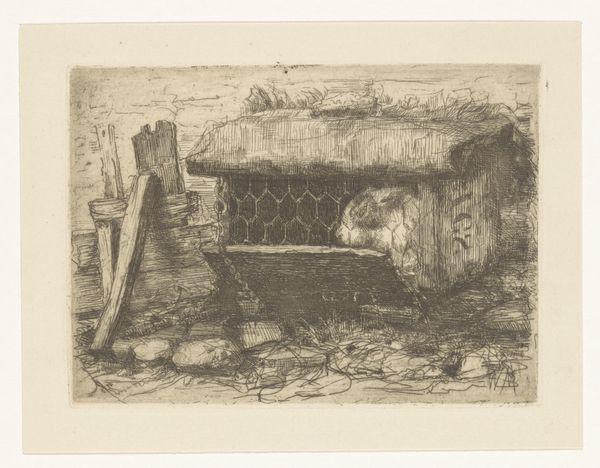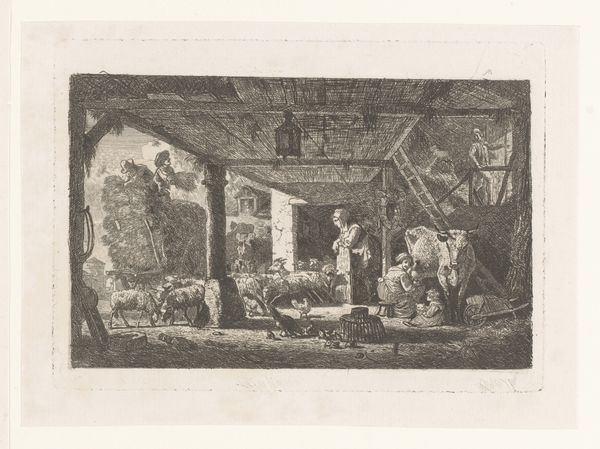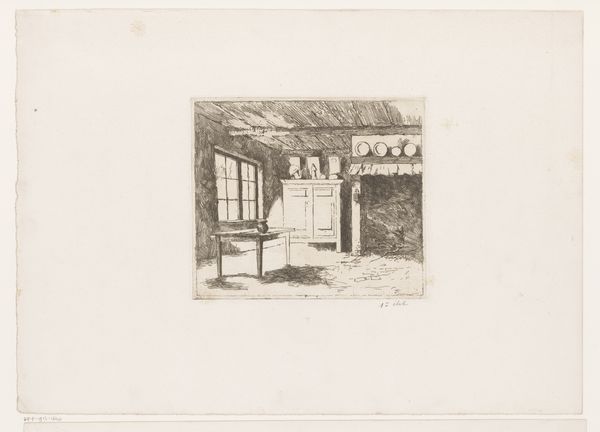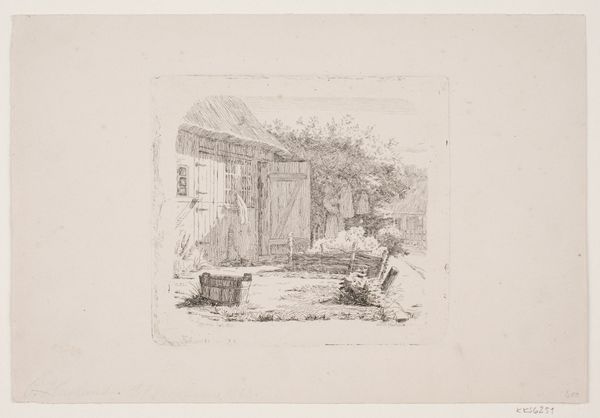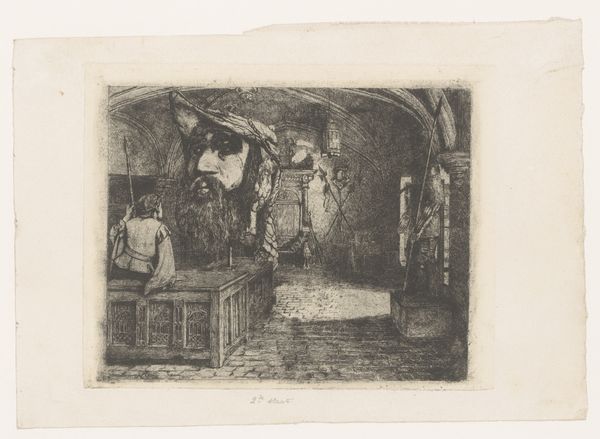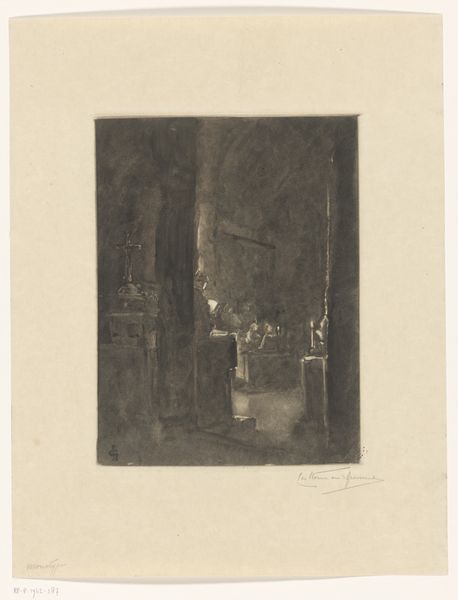
drawing, print, etching, intaglio
#
drawing
#
light pencil work
#
medieval
# print
#
etching
#
intaglio
#
pencil sketch
#
old engraving style
#
landscape
#
natural light
#
ink drawing experimentation
#
pen-ink sketch
#
line
#
pencil work
#
genre-painting
#
natural palette
#
remaining negative space
#
warm natural lighting
#
realism
Dimensions: height 67 mm, width 95 mm
Copyright: Rijks Museum: Open Domain
Editor: This is Camille Venneman’s "Interieur met vrouw bij wieg," or "Interior with Woman by a Cradle," from around 1857. It’s an etching. I’m struck by how simple the setting is, but it also feels so complete. What jumps out to you when you look at it? Curator: Immediately, I see the process of printmaking heavily influencing the image. The artist's hand is extremely visible in the etched lines; they build the entire space and narrative, really. Consider the social context – printmaking allowed for the relatively inexpensive reproduction of images, bringing art to a wider audience and, likely, depicting more scenes of everyday life rather than purely noble or historical subjects. Editor: So you're saying the *making* of the artwork changed who it was *for*, and what it showed? Curator: Precisely. The accessibility changed everything. Note the attention paid to the interior details – the wooden beams, the humble furniture. This emphasis signals a shift in what was deemed worthy of artistic representation, moving towards the quotidian experiences of a broader population who were now able to purchase and consume art. What materials did the artist have access to, and what were their societal implications? How were these prints consumed and circulated? Editor: I see what you mean! Focusing on those elements – the "how" and "why" – really makes the piece feel more relevant to the lives of ordinary people. Did this process of material production impact themes and narrative? Curator: Undoubtedly. It also blurred the lines between "high art" and "craft" in ways that were challenging to established hierarchies. Considering labor is important. Ask yourself: what kind of labor made the art and what kind does the image show? Editor: It's fascinating to consider the social implications baked into the etching process itself! I’ll definitely think more about production when I'm looking at art now. Curator: And I'll keep in mind the way art and subject matter intertwine, it seems critical to continue challenging tradition in terms of what should be worthy of depiction.
Comments
No comments
Be the first to comment and join the conversation on the ultimate creative platform.
